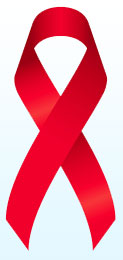
Inclusion of some new diseases in the list of risk indicators for HIV has been suggested by a European HIV initiative.
HIV in Europe, a pan-European HIV/AIDS initiative coordinated from Copenhagen, opined that heterosexuals in Europe are at risk of carrying HIV for long. And they are only diagnosed when their immune system starts to fail, and they begin getting diseases.
An international study spearheaded by the initiative comes to a conclusion that diseases like herpes zoster and certain forms of cancer should be included in the list of indicators for HIV infection. With this inclusion, health care professionals will suggest an HIV test to the patients suffering from these diseases.
These measures could help in earlier detection and treatment of HIV, which attacks and weakens a patient's immune system and help develop European response to treatment and care of HIV patients, said the initiative as per English.news.cn reports.
"We already have a list of AIDS defining diseases, the vast majority of which indicate a weak immune system. This is a symptom of HIV and should lead to an immediate HIV test," Prof. Jens Lundgren of Copenhagen University, who co-chairs the HIV in Europe initiative, has been quoted as saying.
"We need to find people living with HIV sooner than is currently the case, but to do so requires that doctors and other healthcare professionals offer tests to people presenting (themselves) with diseases indicative of a hidden and undiagnosed HIV infection earlier in the course of the disease," Lundgren said in a press statement.
Since 2009, the HIV in Europe initiative has worked upon eight new diseases to see how often they have proven to be indicators of an undiagnosed HIV infection, in a study of 3,588 patients, the statement said further.
As per the network if there are signs of sexually transmitted disease, herpes zoster, anal cancer or hepatitis B or C, among others, the health care professionals should suggest patient an HIV test.<
The network emphasized that these indicators do not necessarily mean a patient is infected with HIV, but that the incidence of HIV was high for the eight indicator diseases.
As per UNAIDS estimates 2.5 million Europeans, both inside and outside of the EU, are HIV positive, but up to 900,000 are not aware of their status. According to HIV in Europe, fifty percent of all people infected with HIV are diagnosed very late in course of their chronic HIV infection.
The initiative plans to present results of the study, and discuss the new guidelines for HIV indicators, at an international HIV conference on March 19-20.
--With inputs from ANI
null
|
|
Read More: UNAIDS | NATIONAL AIDS CONTROL ORGANISATION (NACO) | Kashmir University | Aligarh Muslim University | K P University | University Po | B R A University | Gorakhpur University | Agra University | Ayurvedic University | T.t.d.press | Bikaram English | Rajapur English | Bihta English | Prasadi English | Mangalhat English | Dhanaw English | English | K.r.high School | Bnmu University Madhepura


Comments: